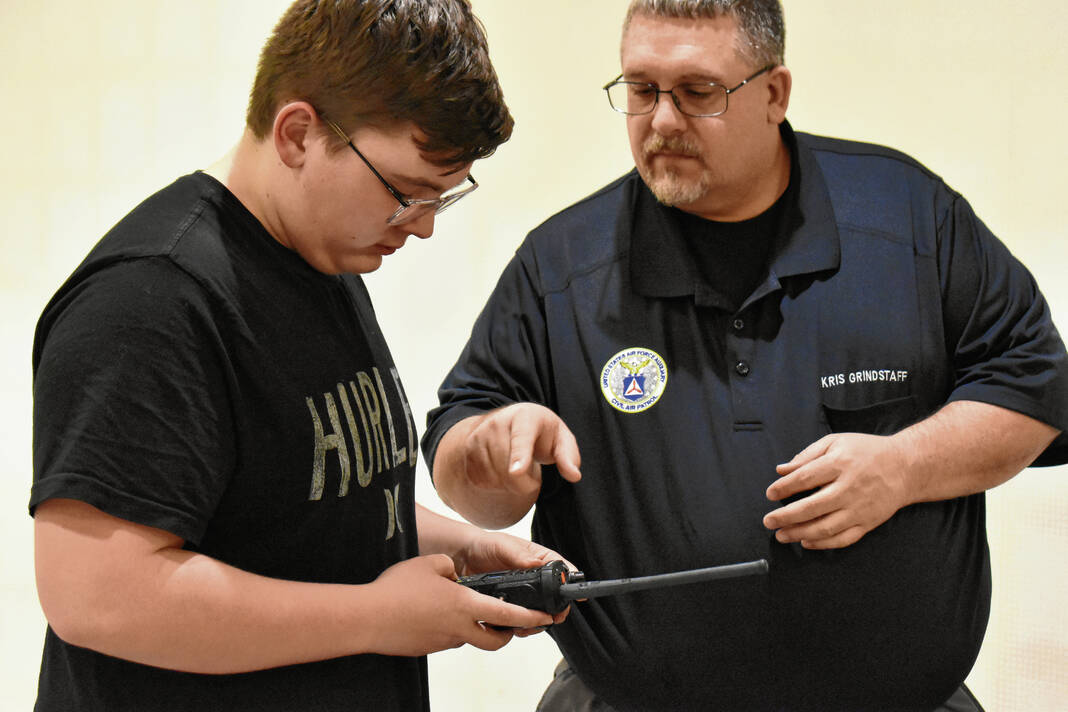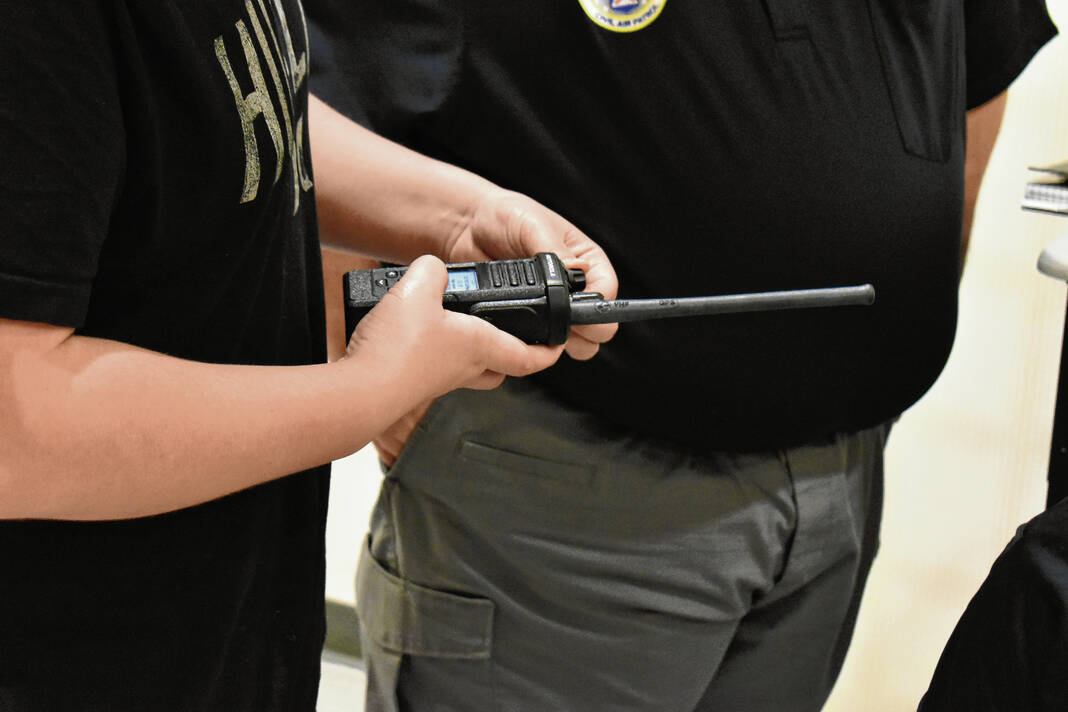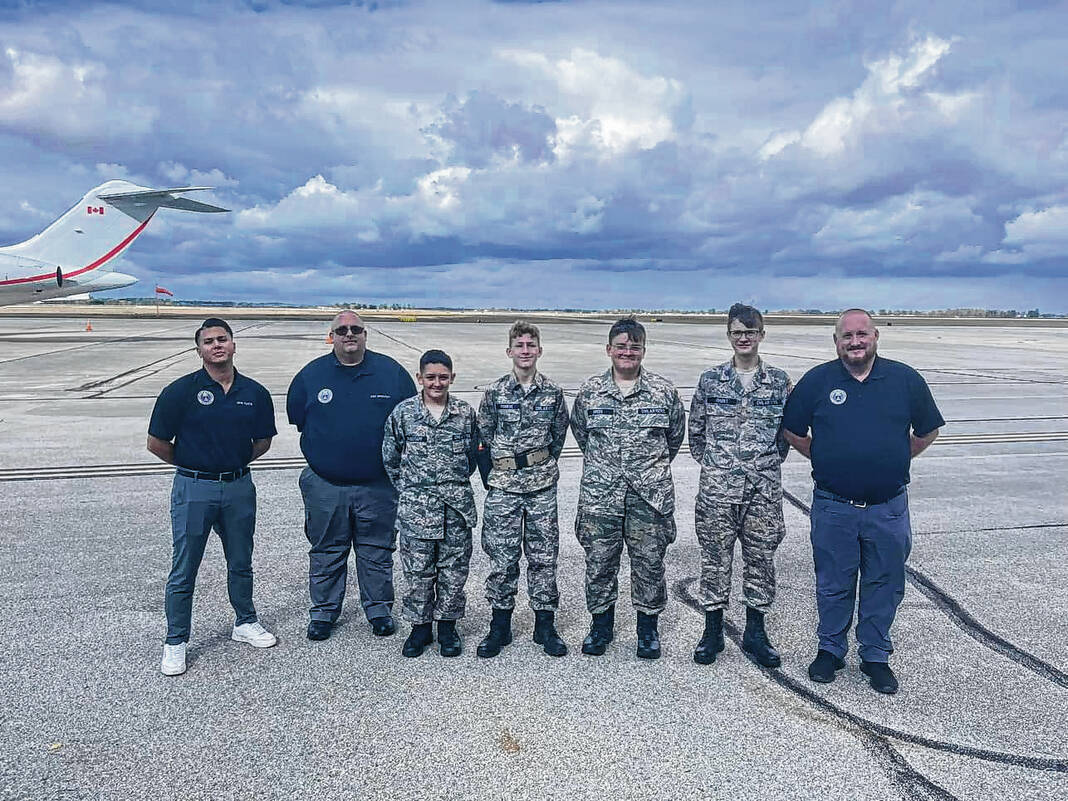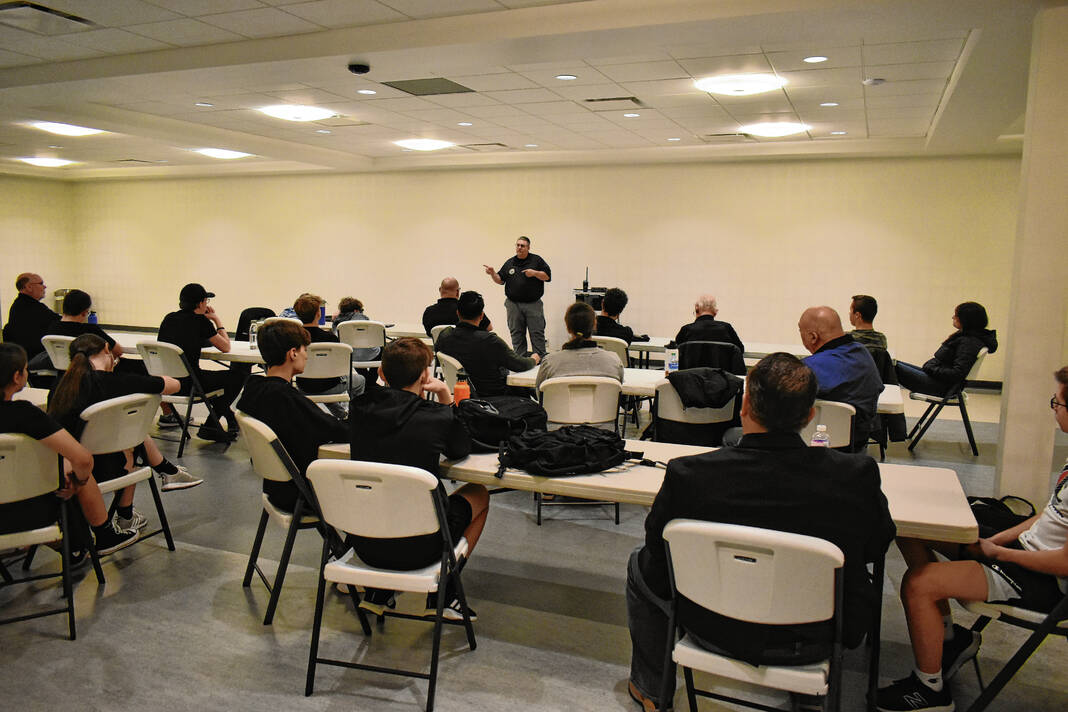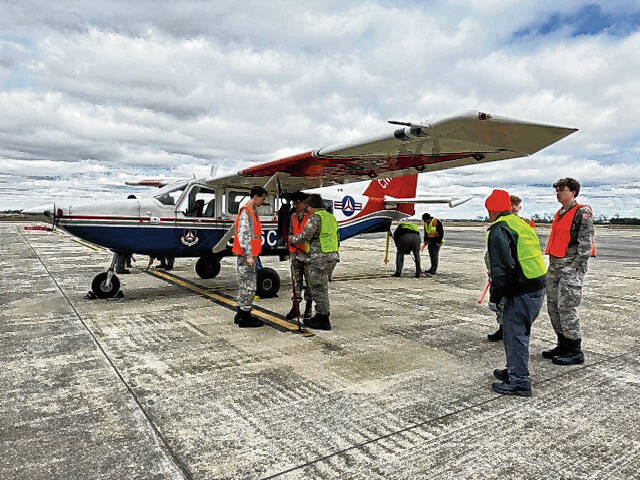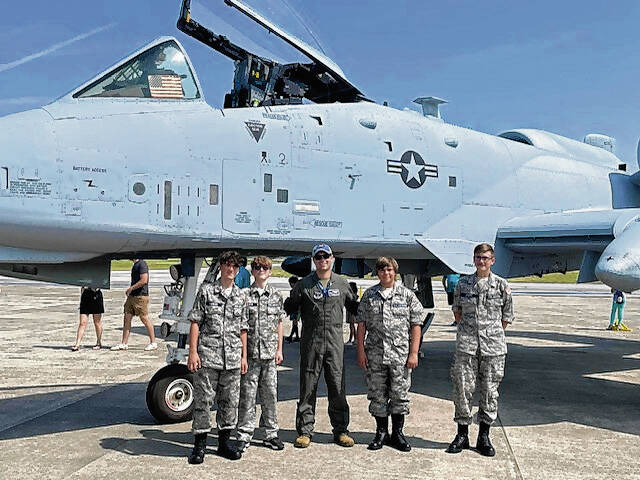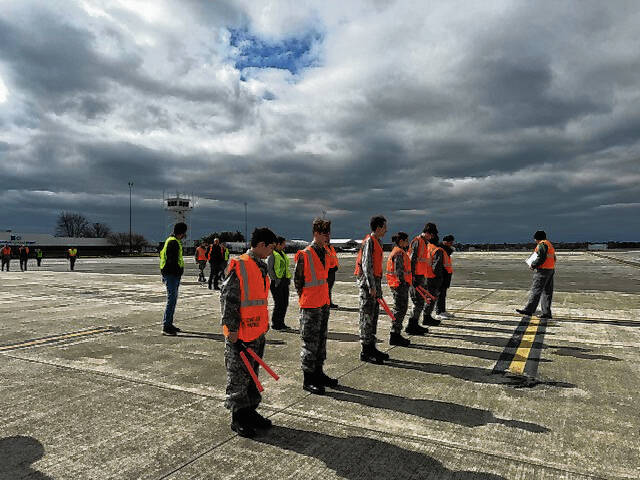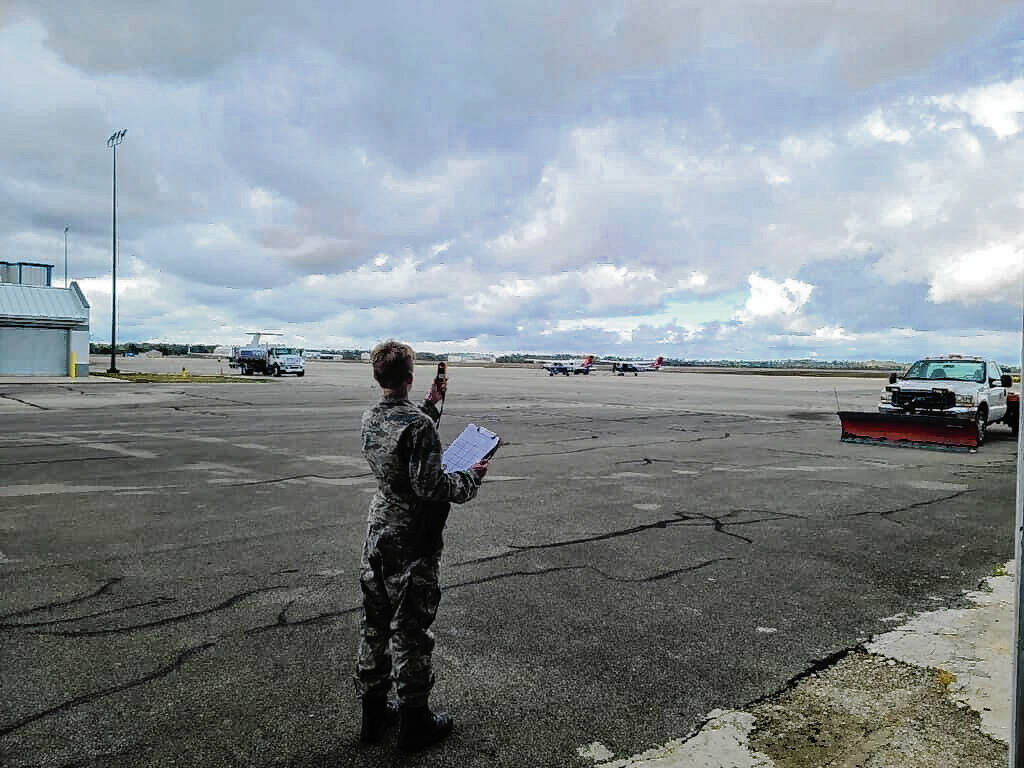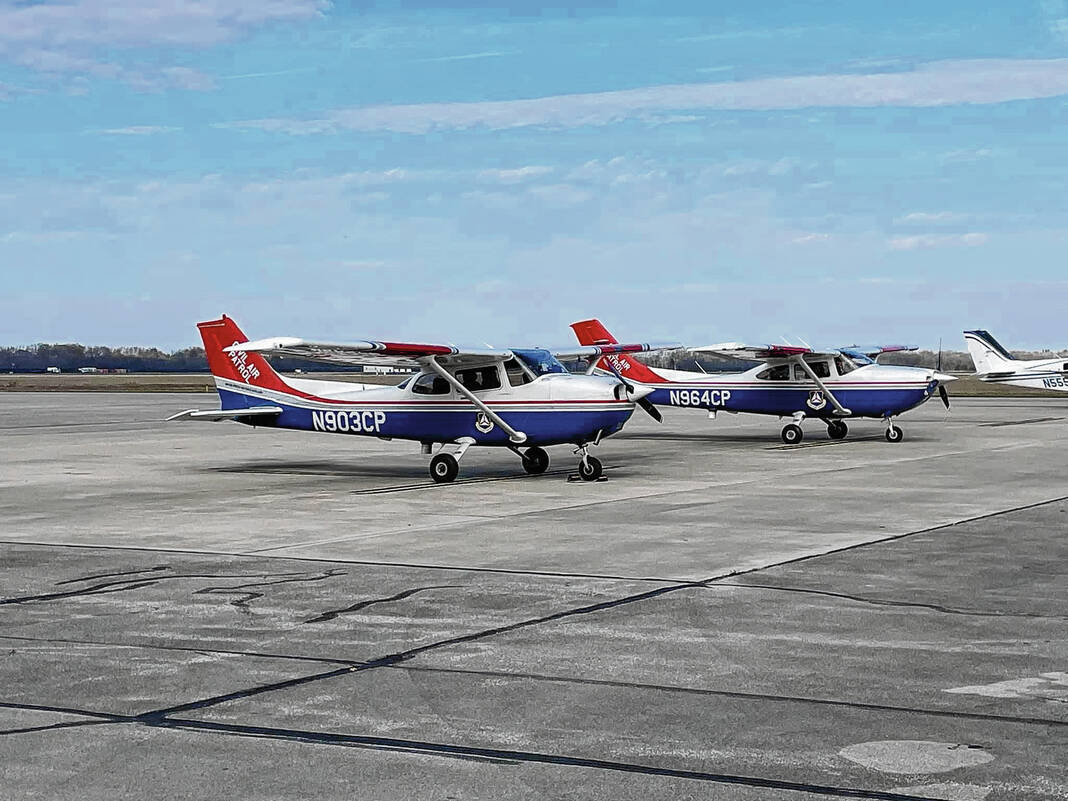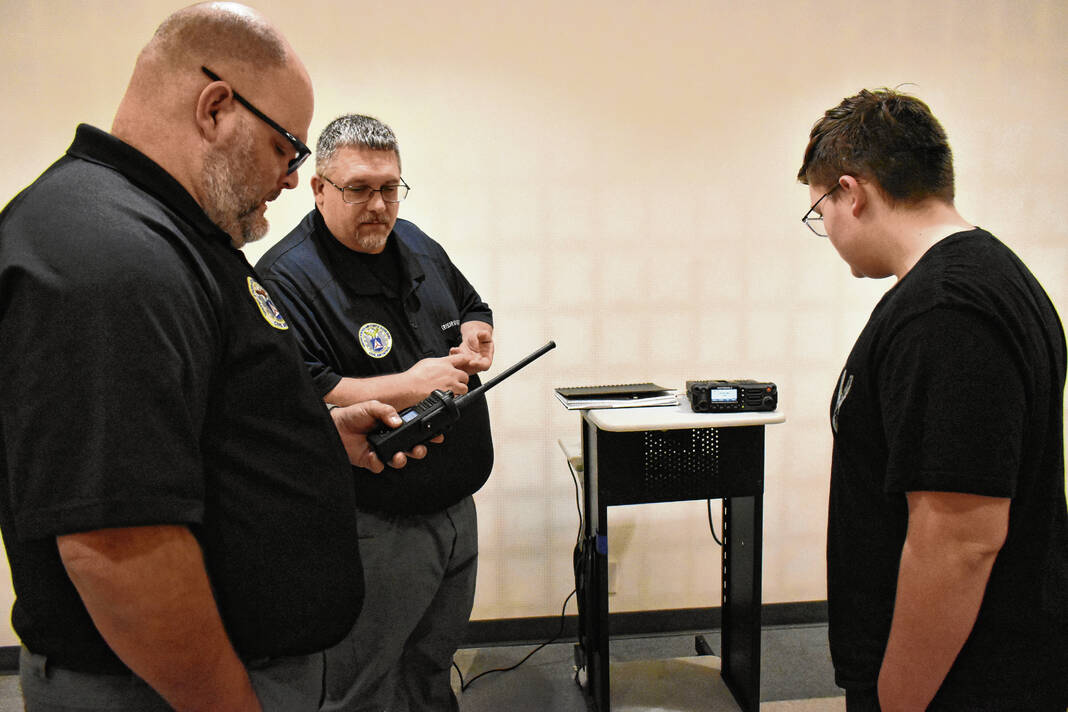Training has been going on for months.
Finally, with the approaching April 8 total solar eclipse, the local youth of the Civil Air Patrol will put their skills to use.
Civil Air Patrol cadets, who range in age from 12 to 18, and their leaders will partner with NASA to collect data during this year’s solar eclipse. They’ll record how the solar eclipse effects local weather, as well as VHF radio operations.
The CAP was founded in 1941 and established as the official civilian auxiliary of the U.S. Air Force seven years later. Chartered by Congress as a nonprofit, the organizations focuses on youth development, aerospace education and the promotion of general aviation.
Over 250 CAP squadrons spanning several different zones will team together to collect data for the eclipse, including the squadron based at the Columbus Municipal Airport. Cadets and leaders from the squadron come from Columbus, Franklin and other nearby communities.
Local cadets are actively working to aid NASA, the Indiana State Police and the Columbus Municipal Airport during the eclipse.
With soaring numbers of projected tourists visiting for the event, the cadets have been asked to aid ISP with monitoring traffic conditions from the sky with their fleet of planes. Cadets from the area will participate in monitoring communications with the pilots of these aircraft, officials said.
The Columbus-based squadron will also have two rotating teams of cadets collecting data for NASA, including winds, cloud coverage, weather and whether there are any radio disturbances, said 2nd Lt. John Martin of Franklin, who is leading the cadets.
A group will also be working radios inside the airport while CAP aircraft are in the air, checking for radio interference, Martin said.
This is not the first time the Columbus squadron has aided NASA during an eclipse. During the annular solar eclipse in October, cadets conducted similar work, said 2nd Lt. Kris Grindstaff, a Franklin resident was responsible for leading the team of cadets during that eclipse.
Although it wasn’t close to totality then, it was a good training run for April 8, he said.
“I think it went well. All the cadets had a lot of fun,” Grindstaff said.
Getting everyone ready for April 8 has been going well so far, Martin said. Along with ordering eclipse glasses for everyone involved, they have also had some classes to provide a better understanding of the solar eclipse. These classes included teachings on different types of eclipses, the different data points that are being monitored and why that are important, Grindstaff said.
Additional trainings included flight marshaling training — directing the movement of the airplane on the ground — as this is something they’ll have to do at the airport during the eclipse, Martin said.
Safety is a major focus as well, specifically telling people to wear appropriate glasses, Grindstaff said.
During the October eclipse, 13-year-old cadet Kaiden Monroe was surprised by how the winds changed “out of nowhere.” Looking ahead, he is most looking forward to seeing April’s eclipse itself, the Columbus teen said.
15-year-old cadet Carter Green of Franklin said the October eclipse was a nice experience. They were outside for about 30 minutes before the winds got to them, he said.
Cadets were able to take temperatures and other measurements before coming inside and going out into the airfield, which became warmer very quickly, Green said. He is looking forward to seeing the total eclipse next month and gathering information about how it affects the weather, he said.
A big part of the Civil Air Patrol is volunteering and service. Being able help NASA is a cool opportunity that fits those guidelines, Martin said.
It’s also something fun for the cadets to do while learning more about science.
“The fact that NASA is trying to get this data collection from all over the world, being a part of that, I feel like it’s just what we’re all about,” Martin said.


